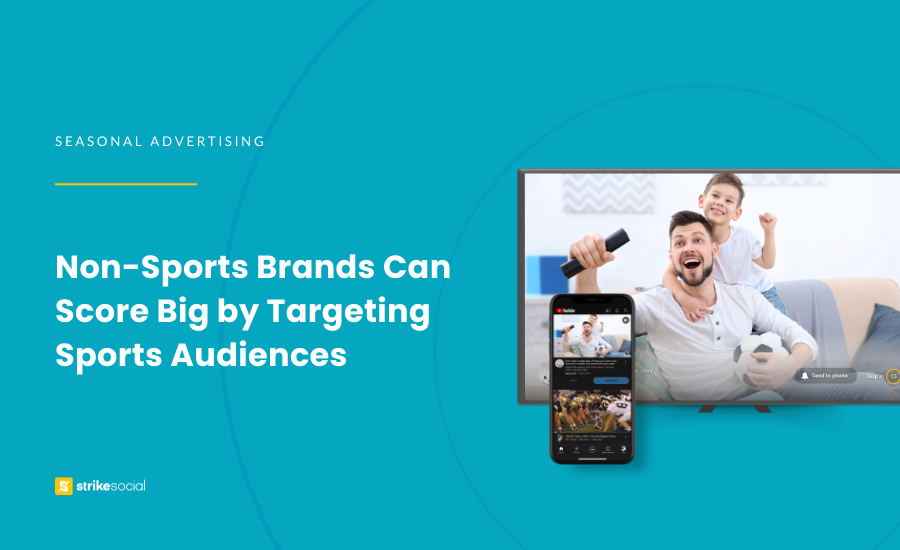Strike Overview
- Uncertain about whether targeting sports audiences is profitable in paid ads? Consider this: a U.S. poll found that 25% of respondents are sports enthusiasts. That equates to approximately 83 million people you can already reach.
- Further, the growth of sports betting has shown a consistent 10% CAGR year-on-year, with an estimated value of US$23.80 billion by 2029, highlighting the increasing interest of U.S. audiences in sports and sports-related activities.
- With sports audiences dominating viewership during peak events, even non-sports brands can achieve significant results by incorporating them into ad targeting strategies.
Jump to Section
How Targeting Sports Audiences Drives Results During Major Sports Events
The meteoric rise of powerhouse women athletes like Simone Biles, Alex Morgan, Sabrina Ionescu, and Caitlin Clark exemplifies the surge of sports on social media. Beyond their remarkable achievements in women’s sports, these athletes have each seen their careers skyrocket and a boost in social media engagement. Comscore reported that women’s sports are becoming mainstream, boosting a 219% YoY social media growth from ESPNW.
This year, the 2024 NCAA Women’s Basketball Tournament shattered viewership records, capturing the attention of sports fans nationwide. The championship game between the University of South Carolina and the University of Iowa drew 18.7 million average viewers, peaking at over 24 million combined on ESPN and ABC. The 2024 collegiate season marked the first time a women’s final surpassed the viewership of the men’s championship game.
Let’s understand how social media’s influence is pivotal in sports marketing. By examining how brands and advertisers can harness sports-centric content strategically, we can uncover opportunities to enhance campaign engagement, establish emotional connections with audiences, and create brand loyalty.
Sports Teams and Athletes are Becoming Brand Champions
Sports teams and athletes possess universal appeal, enabling businesses to engage with enthusiasts and a broader demographic that may not traditionally follow sports.
These types of content transcend various cultures and demographics, capturing themes of unity, perseverance, and victory that resonate with the masses. Notably, sports fans, regardless of their level of fanaticism, often engage with a team or athlete’s social media pages, especially during significant events.
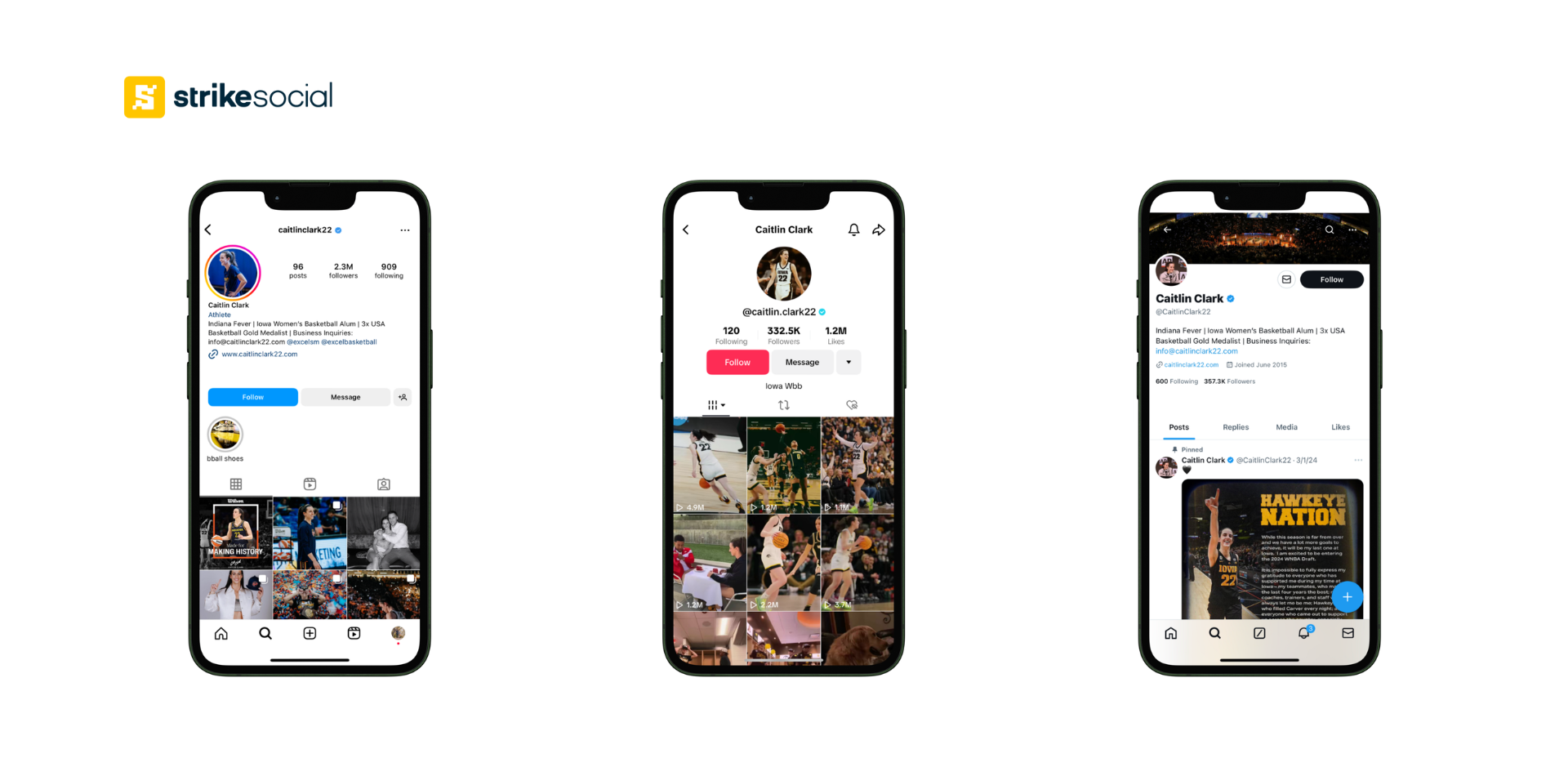
Caitlin Clark, a generational talent in the WNCAA, has experienced phenomenal growth on Instagram, mirroring her exceptional career. In September 2021, she had 46,808 followers. Approximately three years before securing the top pick in the 2024 WNBA draft, Clark has amassed a remarkable 1.5 million followers on Instagram. Her follower count surged during her March Madness stint, with approximately 60k new followers in February-March 2022, 350k in February-April 2023, and a staggering one million in February-April 2024.
The prominence of sports fandom on social media has been amplified recently, particularly with the increasing popularity of women athletes filling our social newsfeeds. As a result, brands can capitalize on this surge of engagement by aligning their advertising campaigns with the trending sports buzz. This strategic placement of ads within relevant sports-related content can effectively capture the attention of a wider audience and enhance brand exposure.
Why Should Non-Sports Brands Add Sports Audiences To Their Targeting?
Given the effectiveness of sports teams and athletes as brand advocates, it’s beneficial to understand why non-sports brands should consider including sports audiences in their paid social strategies.
Looking at the example, Caitlin Clark’s explosive growth on social media exemplifies the individual athlete’s influence and the broader potential for brands to tap into these vibrant fan bases and target highly engaging sports content.
Here are three insights on why advertisers should be targeting sports audiences:
1. Broader Market Reach
Sports and athletes provide a gateway to diverse audiences. Lifestyle brands can have a fresh new set of eyes from sports and athlete followers. Sports content usually shows victory, motivation, and perseverance, and brands can harness these themes to enhance their ad narratives.
2. High Engagement Levels
Athletes like Caitlin Clark demonstrate the potential for quality engagement with sports followers on social media platforms. Brands should be around conversation during key sports events. Interaction with sports followers drives results as it translates into significant brand awareness and recall.
3. Efficient Personalized Messaging Through Localized Campaigns
During events like the NCAA Finals, geo-targeting specific regions or cities where games are being held or where fan bases are located can be highly effective. Localized campaigns allow for more personalized marketing, leading to higher engagement rates at a lower cost than broader national campaigns.
Sports Audience Targeting in Action
The team used custom affinity audiences in a YouTube ad campaign, balancing sports-centric audience targeting and sustainability interests. The campaign achieved a 13% CPM efficiency for non-skippable ads and a 40% cost reduction in CPV for skippable ads.
An important insight gained was that sports-centric audience targeting worked well with non-skippable ads on connected TVs (CTV). Understanding viewers’ viewing intent based on the device can increase efficiency. For non-skippable ads on larger screens, viewers are likelier to stick around and watch the ad, as they’re consuming long-form sports content like condensed games, replays, analysis, or match breakdowns. Unlike mobile viewers, attention spans are shorter, and viewing intent is mixed.
Balancing the ratio of sports-centric and interest-based, matching the right ad formats, and device targeting are factors that advertisers shouldn’t overlook.
Download our 2024 YouTube HVAC Case Study
By targeting sports audiences, the HVAC brand tapped into its viewer’s interests, leading to significant reach and surpassing view targets through the use of Custom Intent audiences in its YouTube campaign.
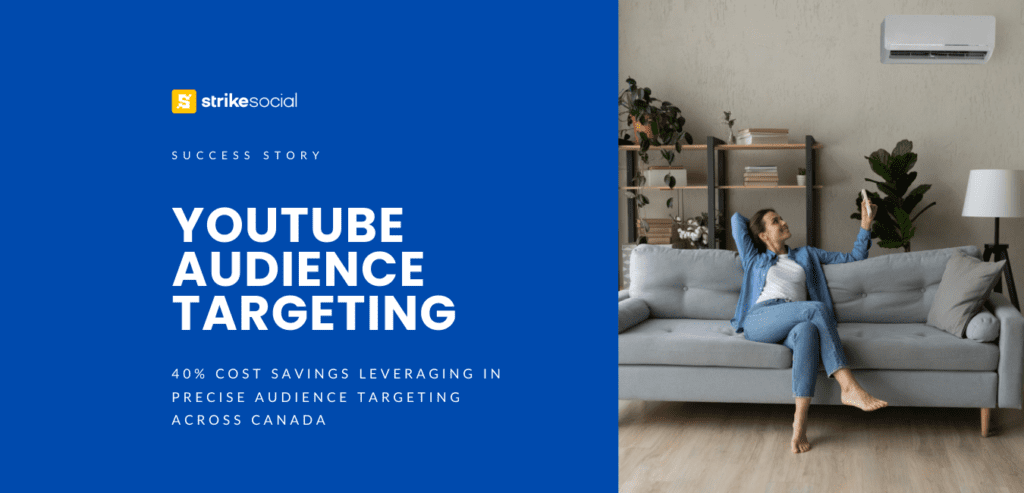
Social Platforms Ad Tools That You Can Use In Capitalizing Growth in Sports Viewership
Having established the synergy between the explosion in sports viewership and social media, advertisers can now know how to capitalize on the popularity of high-profile sports events by utilizing social platforms as dynamic advertising toolkits. These platforms allow brands to effectively engage with sports fans at all levels by tapping into each platform’s user base’s unique features and consumption habits.
Apart from targeting sports audiences, below are three refined strategies advertisers can employ:
Streamline Endorsements or Brand Partnerships Process
- TikTok Spark Ads: Collaborate with influential creators to produce authentic branded content. For example, a sports drink brand might partner with fitness influencers on TikTok to create native-looking workout videos that subtly highlight product benefits.
- Instagram Branded Content: Partner with athletes and influencers to integrate branded messages into their content, enhancing credibility and appeal.
- YouTube BrandConnect: Work with YouTube publishers and sports content creators to amplify brand narratives within fan communities, fostering deeper connections.
Leverage Specific Features or Ad Placements for Integrated Campaigns
- Instagram and Facebook Reels, Stories Ads: Use immersive, short-form video content to captivate audiences and drive engagement during major sports events.
- YouTube Shorts Ads: Go for bite-sized, visually compelling advertisements to reach viewers and maintain their attention.
- TikTok Interactive Add-Ons: Boost engagement through interactive elements like stickers, filters, and mini-games, making ad experiences more engaging.
Further Reading
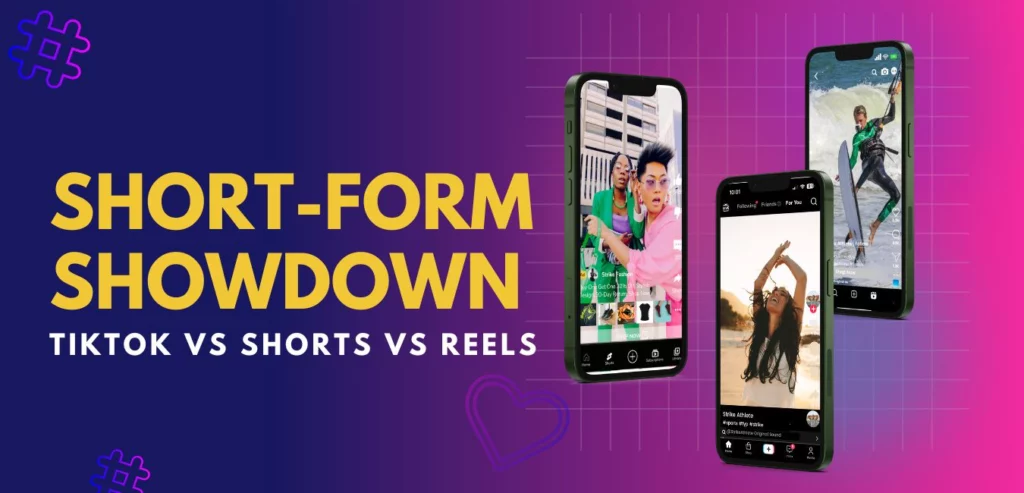
Which Short-Form Ad Platform is Your Go-To?
TikTok pioneered bite-sized videos and quickly became one of the fastest-growing social media platforms. In response, Meta introduced Reels on Instagram and Facebook, while YouTube Shorts soon followed. The question is: which short-form video platform should your brand prioritize?
Utilize Extensive Targeting Capabilities
- TikTok Hashtag Targeting: Reach audiences based on their interests and behaviors within specific content categories, such as #Olympics2024 or #marchmadness2024
- Facebook and Instagram Behavioral and Connection-Based Targeting: Target users precisely based on their interests, online activities, and connections to sports-related pages and groups.
- YouTube’s Access to CTV, Affinity, and In-Market Audiences: Exploit advanced targeting options to reach highly relevant audiences across devices and platforms, optimizing for viewers actively looking for sports content or related products.
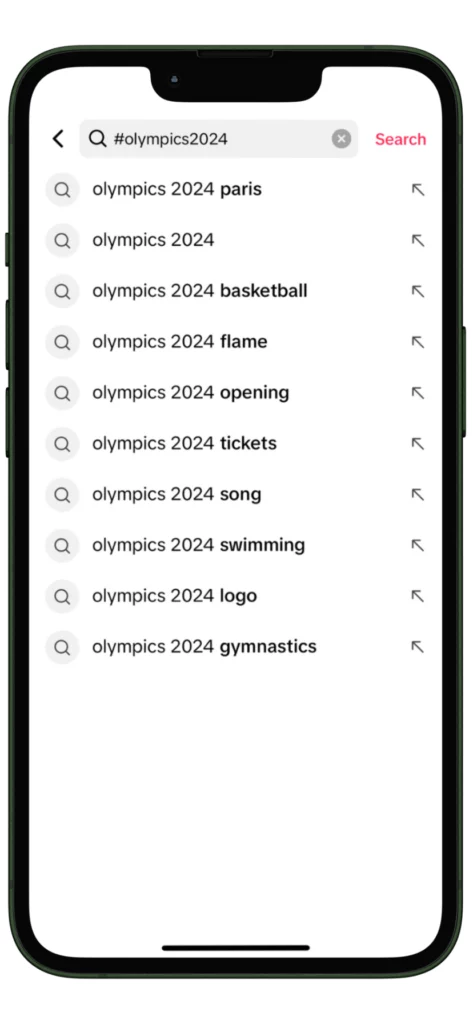
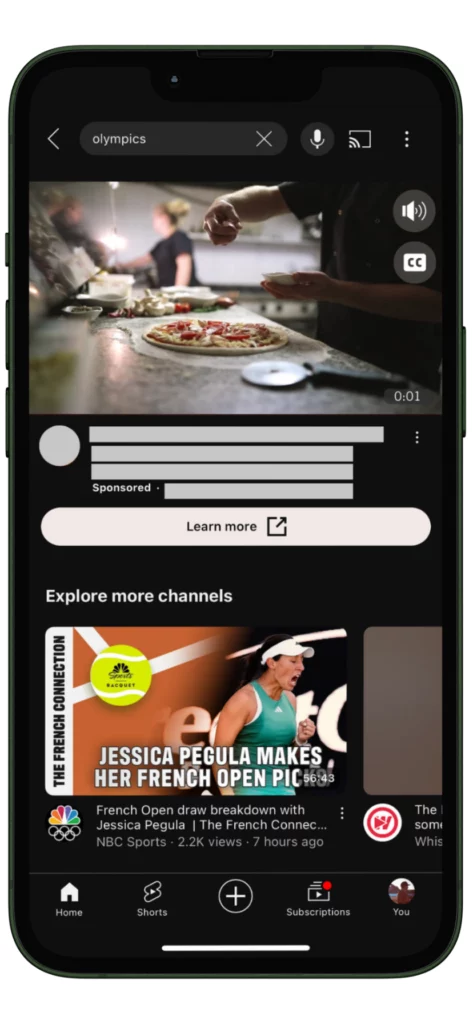
If you’re looking to harness the power of sports fandom in your marketing campaigns and see real efficiencies in targeting sports fans, our team is ready to assist.
We understand the dynamics of sports marketing and the unique opportunities it presents on social platforms. By partnering with us, you’ll access data-centric insights that can transform your advertising efforts.


